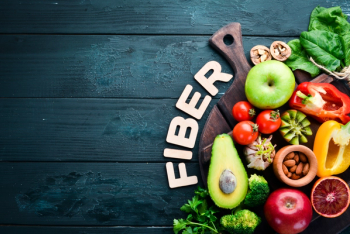
Fibrous Fat-Replacers
Can fiber be a front for fat?
Fat, despite its importance in the structure and sensory profile of food applications, can pinch a nerve in modern shoppers. On the other hand, there’s no debating that fiber is an ingredient consumers want and need more of. Place these seemingly disjointed concepts in the minds of food innovators, and you have a wheel of dual solutions.
I’m talking about fibers as fat-replacers. Companies across the global ingredients market are constantly creating fat-replacing fibers for a range of applications, each pledging to mimic fat in a way that preserves functionality and taste for consumers.
One classic example garnering the attention of the scientific community is Nutriose, a unique line of food dextrins from Roquette Frères (Lestrem, France). Nutriose offers neutral-tasting ingredients derived from non-GMO corn or wheat starch-the corn product being completely gluten free and the wheat product meeting gluten-free standards. Soluble fibers in Nutriose are purported to mimic the mouthfeel of fat in numerous products. Roquette claims to have confirmed this with a skim milk product in which Nutriose provided mouthfeel comparable to higher-fat milk. Fat reduction is available up to around 40%, depending on the application, says the company.
Also, with 85% fiber content, Nutriose can further distinguish your product with fiber claims.
Clinical studies (and there are many) have validated safe dosages for digestion of Nutriose, while also demonstrating impacts on energy intake, insulin resistance, and self-reported satiety.
Nutriose can be used in just about everything: from fruit preparations and confectionery to dairy, biscuits, and beverages. Available in an agglomerated powder, the ingredient labels as “dextrin” and can be complemented with the terms “soluble dietary fiber” or “dietary fiber.” Regular and low-molecular weight options make for variable use of the product.
Fiber-for-fat is having a truly global moment-so much so that Collïoides Naturels (Rouen, France) is providing its customers with ingredients derived in part from African acacia trees. Equacia is the company’s texturizer range from acacia gum fibers (soluble) and gluten-free wheat fibers (insoluble). Tasteless and odorless, the ingredient guarantees 90% dietary fiber on a dry-weight basis.
As is the case with Nutriose, Equacia is limited in its fat-reducing prowess but can achieve levels as high as 50%-anything more might compromise sensory and shelf-life conditions. Rest assured that the product is easy to work with, as the company claims Equacia will easily and immediately dissolve in cold water, even at high concentrations.
A unique benefit of this fiber is a clinically proven prebiotic effect at 6, 10, and 15 g/day, says the company.
Natural, GMO-free, and allergen-free, Equacia is available for many uses-from baked goods to confectionery and even dressings and ice creams. It all depends on the ratio of acacia gum to wheat fiber.
What are the limitations to finding fat-mimicking fibers in nature? This seems to be a good question, since you can also squeeze the stuff out of lemons and limes.
Ceamsa (Porriño, Spain) has managed to extract fiber from citrus peels and somehow reduce fat in, of all things, meat.
Dubbed CeamFibre 7000, Ceamsa’s dietary fiber provides water and oil-binding properties with ease thanks to a porous fiber structure. Extra water retention creates a gelling or thickening quality to help mimic fat’s texture. This fiber can be used in baked goods and other arenas, but meat is a clear distinction for CeamFibre7000. Beyond fat reduction, the ingredient can also reduce the use of meat itself. Purge and drip-loss control are added benefits. CeamFibre 7000 is over 85% fiber and is gluten- and allergen-free.
Newsletter
From ingredient science to consumer trends, get the intel you need to stay competitive in the nutrition space—subscribe now to Nutritional Outlook.





